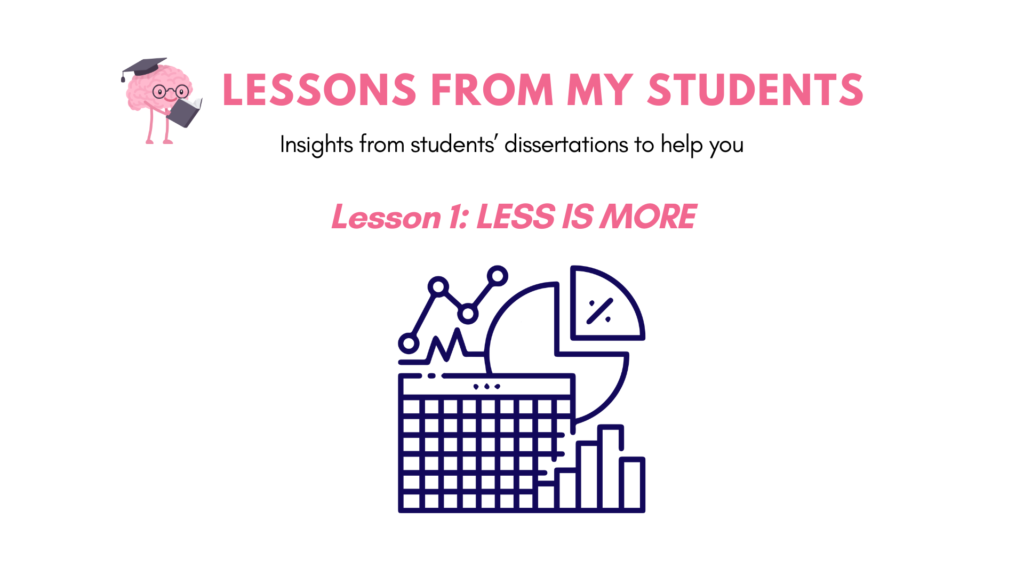
Less is More – Consolidation is Key
The Scenario
A recent dissertation I reviewed contained over 100 small tables and graphs, each presenting a single aspect of the student’s findings. Tables were presented per demographic and item, for example, the respondents’ level of education, years of experience, and age group (there were six such small tables), and each table had a corresponding pie or bar chart with repetitive comments for each. There was no consolidation or central message. The student presented their other findings without synthesis: dozens of little tables and corresponding figures.
The result? The dissertation was long and boring for the reader. Any reader would struggle to track the main findings in all the detail, and the student had no central message.
The Issue
While it’s essential to be thorough, consolidation is key. According to the American Psychological Association’s (APA) guidelines, tables and figures should present a large amount of information efficiently to make data more comprehensible (APA, 2020). Repetitively presenting data in tables and charts without consolidating, complementing, or highlighting findings is counterproductive.
The Solution
To maintain clarity and readability, follow the APA’s advice: Use tables and figures only to enhance understanding or reduce narrative complexity.
Here’s how I recommend applying this principle:
- Consolidate key tables: Instead of presenting every detail in separate tables, I combine data where possible and condense the most relevant findings into a few key tables. For example, create a descriptive statistics table similar to the classic “Table 1” in journal articles to summarise the essential characteristics of your sample.
- Limit charts to complement tables: Then highlight important aspects of the table or chart in the text to convey your message.
This way, we use tables, figures, and text to complement and reinforce the key message, not merely to restate or re-describe information.
The Key Takeaway
When presenting data in a dissertation, aim for clarity and purpose. Each table or chart should add value by simplifying complex information or highlighting trends not easily seen in the narrative. By consolidating tables and avoiding repetitive visuals, your work becomes more reader-friendly and impactful.
Reference
American Psychological Association. (2020). Publication manual of the American Psychological Association 2020: the official guide to APA style (7th ed.). American Psychological Association.
Let’s Connect
Feel free to reach out if you need help ensuring your research meets the standards required for a dissertation or journal. I’d be happy to discuss how we can work together.
Contact us at [email protected], and let’s ensure research excellence.